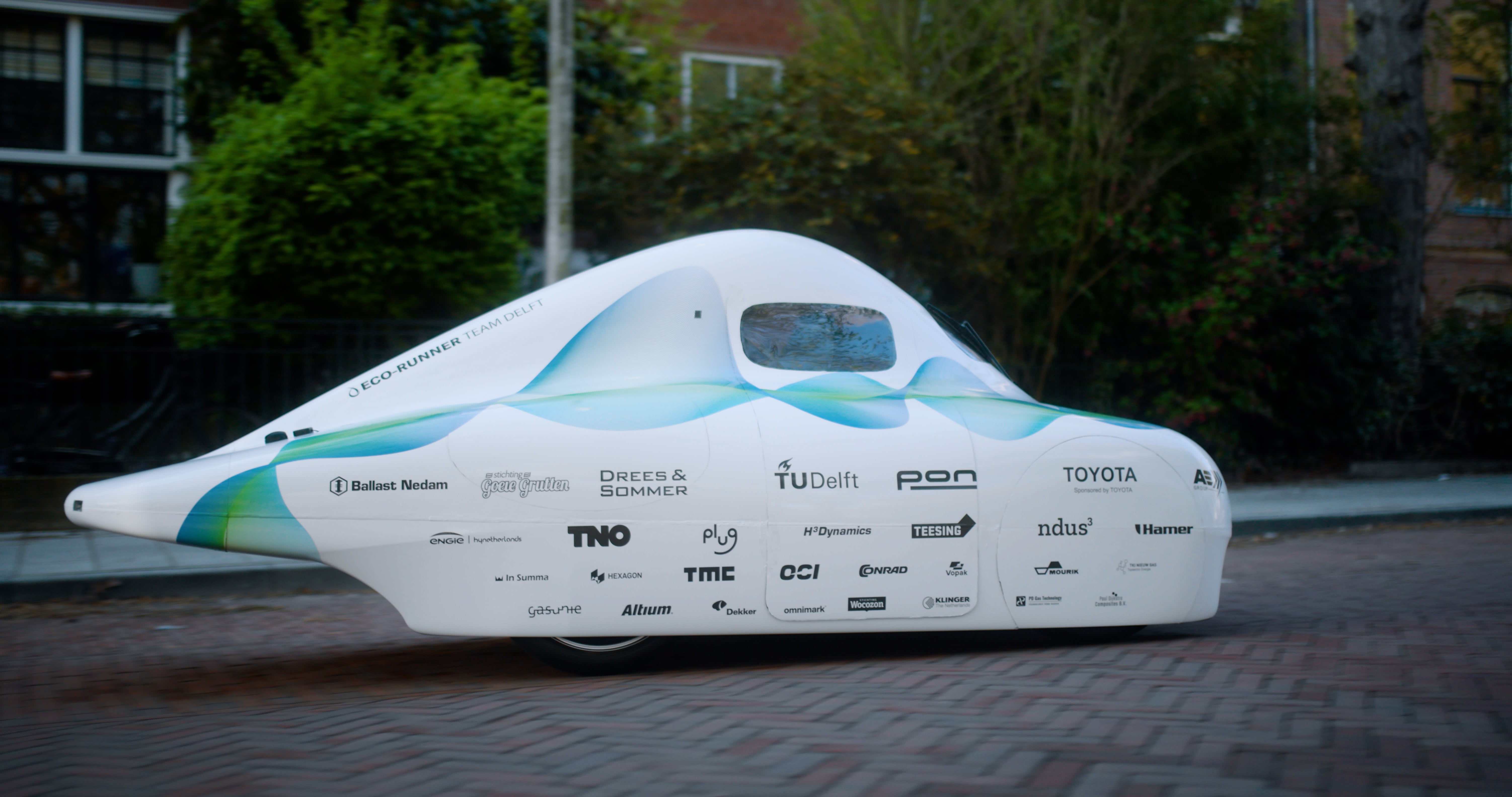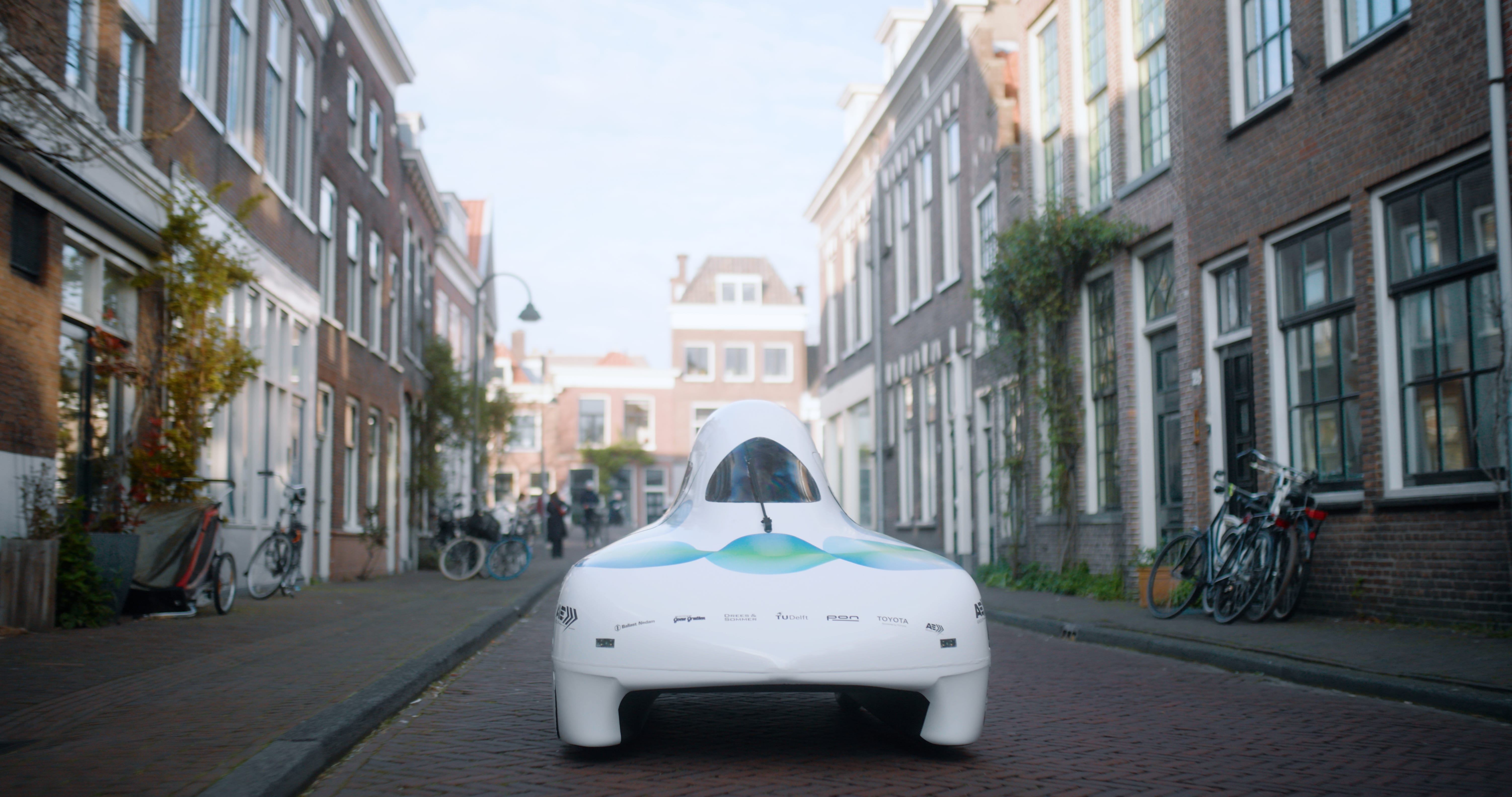
“Efficient, reliable, and futuristic.” Julian de Klerk quickly fires these three adjectives when asked to describe the car he and his team worked on for nine months. He is the team leader of the Eco-Runner Team Delft, whose car aims to set a new world record for kilometers driven without refueling. On May 2, the cohort unveiled its hydrogen power car designed for this mission, the ERXIII.
The Eco-Runner is a student team of the Delft University of Technology, the Netherlands, which every year designs a new car to participate in some of the most prestigious student competitions. Last year, the team won the award for the most efficient car at Shell’s Eco-Marathon. The event challenges European student teams to design, fabricate, and race fuel-efficient cars.
While willing to keep high-efficiency levels, the student team is up for a new challenge this year: setting a new record for kilometers driven without refueling. The current record holder is a methanol fuel cell-powered Renault Zoe designed by ARM Engineering, which drove 2055,68 km in 2022. Since last September 2056 is the number everyone at Eco-Runner is most familiar with.
“Efficiency and reliability are the main focus of this year’s project. While the previous concept proved efficient, this year, we aimed for improved reliability for the record we’re trying to set. And well, it’s quite futuristic looking,” the team leader explains.
Water droplet
A vehicle’s efficiency strongly depends on its design. Whenever a car moves, it faces drag – a mechanical force opposing the movement of a solid body. This force generates from the difference in speed between the moving object and the fluid – air, in this case. Aerodynamics choices help reduce drag, allowing air to flow as smoothly as possible so that the amount of energy the body applies to move is less intense. The more efficient the car, the lower the amount of fuel used to move and ‘’win” air resistance. Finding solutions to tackle drag is the mission of all car engineers, from those designing an F1 model to student team members.
Eco-Runner’s chassis presents a curved line. “You could say that it looks like a ghost but is similar to a water droplet. The ERXIII features a longer and rounder end to maximize the air flows efficiency along the way,” de Klerk points out.

Sturdiness at a featherweight
Striking a balance between making a car that uses as less fuel as possible while being solid enough to drive thousands of kilometers is thus what kept the whole team busy in the past months. On top of that, making it more robust shouldn’t increase its weight too much, as the ERXIII needed to be lightweight. Carbon fiber kills two birds with one stone, assuring sturdiness at a featherweight. The car’s wheels and many other body components are made from it.
The result is an 80 kilograms-heavy vehicle with a top speed of 45 kilometers per hour on 400 watts of power. The car has five hydrogen tanks that store enough fuel to drive over two thousand kilometers without refueling. Then it’s up to the fuel cells to convert hydrogen into electricity, powering the ERXIII’s electric engine.

Hydrogen-powered city car
Despite the car only having space for the driver, the Delft team sees it as a prototype of a future urban vehicle. Hydrogen is often deemed the best option to accommodate trucks when discussing what technologies to use for making mobility more sustainable. De Klerk and his teammates believe this fuel can also impact the passenger cars segment.
“We believe that battery electric and hydrogen electric vehicles will play a part. It’s not picking one over the other, but we rather see both of them complementing each other. Given that the current electricity network can’t accommodate a hundred percent electric car fleet, there’s the need for more solutions, and hydrogen would be that,” he stresses.
In his opinion, a few aspects make this technology particularly palatable to the average consumer. Specifically, he underlines the possibility of driving long distances and refilling times comparable to petrol-powered cars.

Finding the best line
Before the ERXIII hits the racing track, further tests will be carried out by the Delft students. A significant one is about strategy. In the upcoming weeks, the team will work on a computer model that simulates trajectories and race lines, calculating which ones are the best for achieving the greater possible efficiency.
The 2023 edition of Shell’s Eco-Marathon will happen from May 20 to 25 at the Circuit Paul Armagnac of Nogaro in southwest France. Then, it will almost be time for the team members to make room for new ones.
Race in sight
Although a turnover will happen, this year’s acquired knowledge stays within the team. At the end of their spell, old members welcome the new ones for an onboarding period. During these weeks, the newcomers learn and understand the choices made in designing the car, possibly spotting details to tweak in their upcoming design.
For now, all Eco-Runner team members’ energies are being spared for the big event and to make their car drive for 2056 km without refueling.

